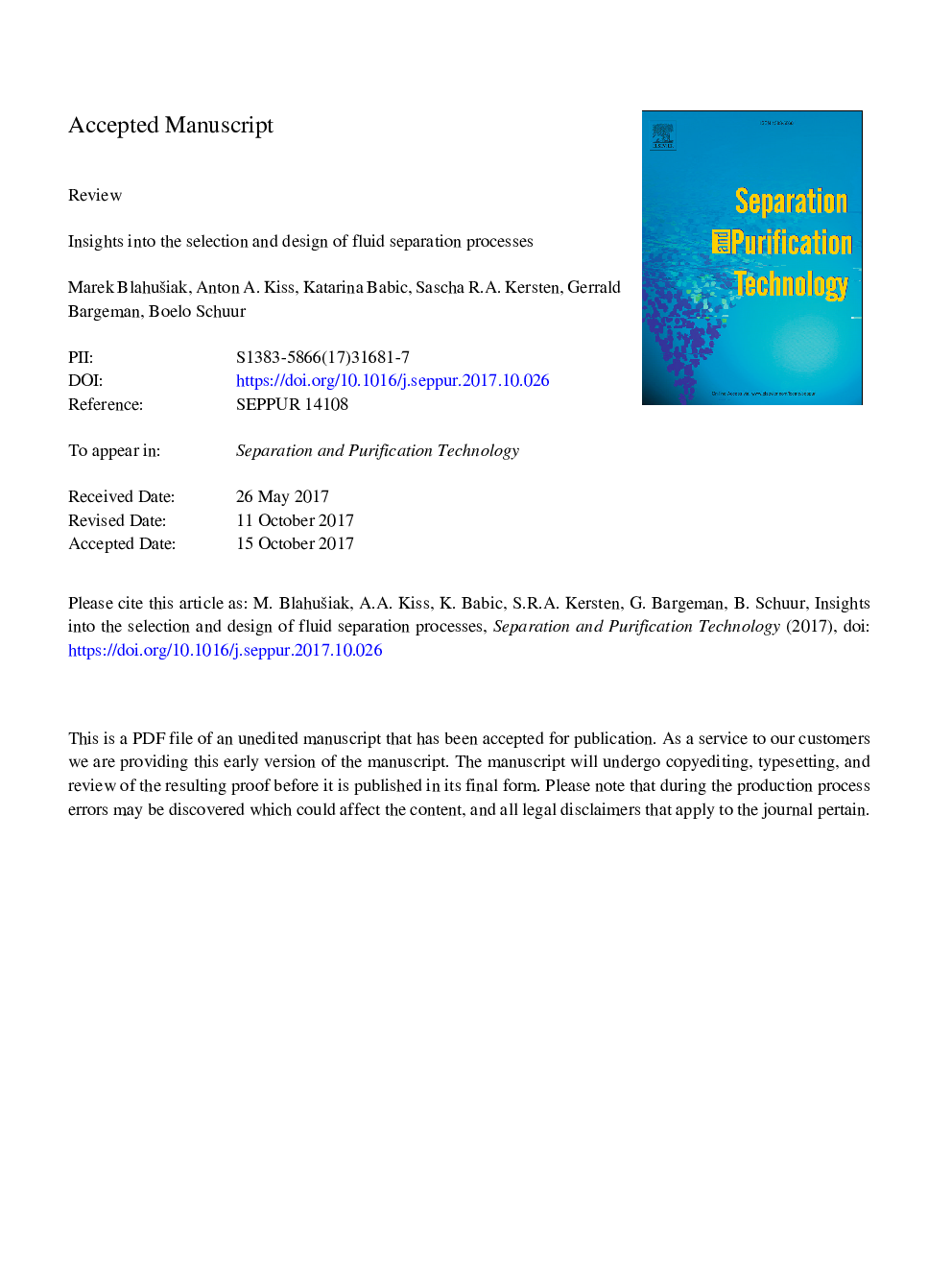| کد مقاله | کد نشریه | سال انتشار | مقاله انگلیسی | نسخه تمام متن |
|---|---|---|---|---|
| 7044084 | 1456926 | 2018 | 57 صفحه PDF | دانلود رایگان |
عنوان انگلیسی مقاله ISI
Insights into the selection and design of fluid separation processes
ترجمه فارسی عنوان
بینش در انتخاب و طراحی فرایندهای جداسازی مایع
دانلود مقاله + سفارش ترجمه
دانلود مقاله ISI انگلیسی
رایگان برای ایرانیان
کلمات کلیدی
جداسازی مایع، تقطیر، فن آوری تقطیر پیشرفته، استخراج مایع مایع، انتخاب فرآیند،
موضوعات مرتبط
مهندسی و علوم پایه
مهندسی شیمی
تصفیه و جداسازی
چکیده انگلیسی
Separations account for approximately 50% of all manufacturing costs, making the selection of the proper technology, and a potential affinity separation agent (ASA) of essential importance for process design. This selection is not straightforward. In this paper, aspects of fluid separation technologies, including shortcut calculations to estimate heat duties, are reviewed and applied to create insights in ab initio fluid separation process selection without extensive process simulations. It was found that composition and state of the feed can have major impacts on the minimal required heat duty, as well as the desired product purity. Distillation of dilute feeds is intrinsically hindered by a low internal efficiency and solvent based separations should be considered. Furthermore, the minimal heat duty for liquid-liquid extraction (LLX) with high boiling solvents is primarily feed composition dependent, while for low boiling solvents the solvent to feed ratio is important. This is also the case for the minimal duty for extractive distillation (ED) with light solvents, whereas the minimal duty of ED using high boiling solvents is independent of the composition, and generally higher than the minimal LLX duty. ED can be operated with only two columns, whereas LLX generally requires at least three, leading to higher capital costs. The feed composition dependence of the LLX minimal heat duty can result in a feed compositional break-even point when comparing LLX with ED. Using these theoretical insights in fluid separations, a series of industrial cases was reviewed and critical aspects in technology selection, and solvent selection and design such as selectivity and capacity are discussed. The results confirm the applicability of the minimal heat duty approach as a quick prediction tool for opportunities of solvent based technologies, as well as the need for including other considerations such as the number of required columns (capital costs) and the possibility to recover sensible heat.
ناشر
Database: Elsevier - ScienceDirect (ساینس دایرکت)
Journal: Separation and Purification Technology - Volume 194, 3 April 2018, Pages 301-318
Journal: Separation and Purification Technology - Volume 194, 3 April 2018, Pages 301-318
نویسندگان
Marek Blahušiak, Anton A. Kiss, Katarina Babic, Sascha R.A. Kersten, Gerrald Bargeman, Boelo Schuur,
